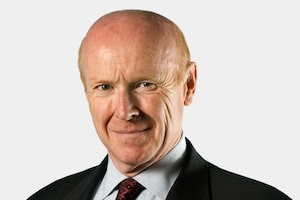The events of the past couple of years have changed the investing landscape in fundamental ways.
That's true of average investors, of large pension funds and equally true of wealthy families.
This year, I've had conversations with two participants in a global study of over 150 families with investments over $100-million - it's a study that holds important lessons for all investors.
Keeping tabs
The Wharton Global Family Alliance was established in 2004 in response to the desire by wealthy families to compare their performance with similar families around the world.
At a May meeting in Boston, I met with Laird Pendleton, who chairs the alliance's advisory committee. And, at a Montreal conference in August, I spoke with Raphael Amit, academic director at the Wharton School of Business.
In 2007 and again in early 2009, the alliance conducted interviews with wealthy families; 40 per cent had assets of more than $1-billion (U.S.). Half these families were in Europe with 44 per cent in the United States, Canada and South America.
These families have very long time frames, investing with future generations in mind; their returns are often compared to large endowments such as Harvard or Yale.
With that as a comparison, the performance of these families through the 2008 and 2009 downturn was exceptionally good. In the twelve months to June, 2009, Harvard's and Yale's endowments each lost more than 25 per cent. By contrast, only 45 per cent of family offices (a professional management organization owned and controlled by the wealthy family) in the study suffered losses over 6 per cent, and 15 per cent actually had positive returns.
A shift in thinking
Despite having fared relatively well, many families changed their approach as a result of the downturn.
Professor Amit talked about a significant shift toward less volatile assets, particularly among American families.
From 2007 to 2009, U.S. families cut their allocation to stocks in half, from 62 per cent to 32 per cent. Offsetting this, they increased their allocation to bonds by 11 percentage points and to hedge funds by eight percentage points. They also added 11 percentage points to "other stores of value" such as gold and collectibles.
The changes among European families were less dramatic. They started off in 2007 with a stock allocation of 31 per cent, half that in the U.S. They reduced this to 21 per cent in 2009, offsetting this with a slight increase in bonds and a 14-percentage-point increase to "other stores of value."
Learning amid the downturn
In addition to his role with the Wharton Global Family Alliance, Mr. Pendleton helps manage his own family wealth, something that has lasted for six generations.
He talked about some of the changes among wealthy families arising from the downturn.
First is a general reduction in the tolerance for risk and more regard for the downside.
A second takeaway is increased due diligence before making investments and insistence on more transparency about how underlying investments work.
Along with this comes more concern about liquidity - the ability to turn investments into cash if needed. In our conversation, Mr. Pendleton said that 2008 and 2009 were a test of investment managers' ability to deliver on promises about liquidity, a test that many had failed.
What makes a difference
A key question in the research was what drove the difference for the families that performed best?
The families that participated in the survey were divided into two groups - the "high-performing group" posted above-average performance and the "low-performing group" that came in below average. Of note, European families outperformed the Americas over the one-, five- and 10-year time frames.
The first quality that sets the high-performing group apart is a focus on providing clear direction to their advisers. Families that fared relatively well tended to provide more comprehensive guidelines to their managers for selecting investments - for individual investors, this would be equivalent to having a detailed investment policy statement.
The second quality of top performing families is a focus on education and skills upgrades. Individual investors can borrow from this also - increasing your commitment to becoming a more knowledgeable partner in managing your investments does pay off.
The final quality of top performing families relates to a healthy skepticism about hot trends and unproven approaches to investing - many of the top performing families steered clear of the financial models and algorithm-based approaches to investing so popular in the period leading up to the financial crisis.
Few of us will ever have the $100-million it takes to establish our own family office. That doesn't mean, though, that we can't take some of the approaches and lessons from the world's most sophisticated investors and apply them to our own situation.
 Dan Richards
Dan Richards